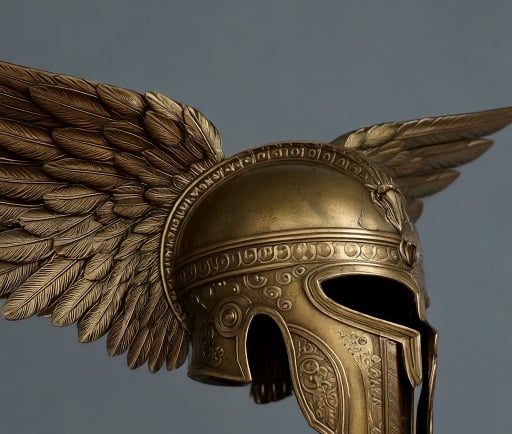The Greek Bronze Winged Helmet of Phrygian-Chalcidian: A Symbol of Strength and Speed


Introduction
The Greek Bronze Winged Helmet of Phrygian-Chalcidian, a remarkable artifact from the classical period of the 4th century BC, epitomizes the artistic ingenuity and military prowess of ancient Greek civilization. Distinguished by its striking design and symbolic elements, this helmet served not only as protective gear but also as a manifestation of the wearer’s might and agility.
Design Features and Symbolism
This exquisite helmet features a captivating winged crest, which is emblematic of the strength and speed imbued in its wearer. The crest not only enhances the helmet's aesthetic appeal but also signifies the warrior's connection to divine protectors such as Artemis, the goddess associated with strength, hunting, and protection. The intricate details of the bronze construction reveal the high level of craftsmanship that characterized the period, showcasing ornate patterns and motifs that reflect cultural beliefs and practices.
The Historical Context of Use
During the 4th century BC, Greek warriors were often adorned with formidable weapons and protective gear, such as the Phrygian-Chalcidian helmet. This type of helmet was particularly favored due to its practical design and protective capabilities, which proved essential in warfare. The blend of functionality and artistry in the winged helmet symbolizes an era where aesthetics were just as vital as practicality in military attire. Its significance extended beyond the battlefield; it served as a status symbol for elite warriors who sought to demonstrate their valor and divine favor through their battle gear.
In addition to its protective function, the Greek Bronze Winged Helmet of Phrygian-Chalcidian stands as a testament to the cultural values of strength and heroism cherished by ancient Greeks. The helmet encapsulates the spirit of the time, linking the physical embodiment of a warrior’s traits to the divine, thus acknowledged in their depiction of figures like Artemis. This connection between the warrior and their symbols reinforced societal beliefs surrounding valor and protection.
Conclusion
The Greek Bronze Winged Helmet of Phrygian-Chalcidian is not merely a piece of equipment; it is a critical reflection of ancient Greek culture and military ethos. Its design continues to evoke admiration and appreciation for the historical significance it represents. As we explore such artifacts, we gain deeper insights into the strengths and values that fueled the civilization's legacy, highlighting the unique intersection of art, warfare, and mythology in shaping the identity of a people.
